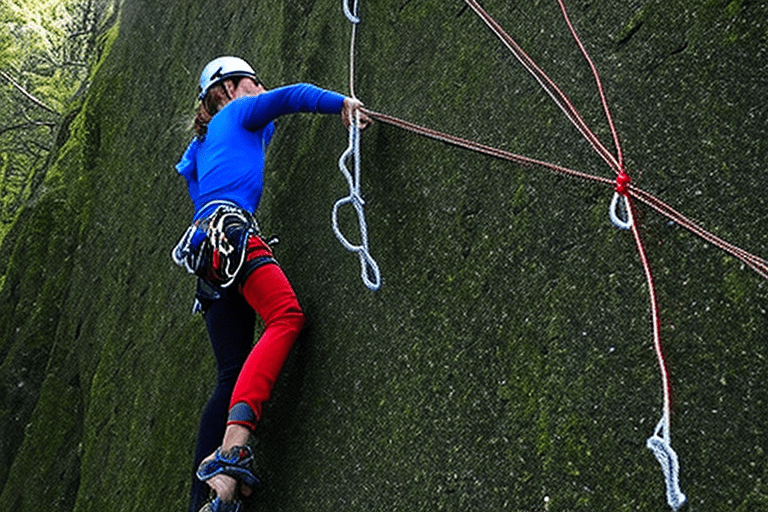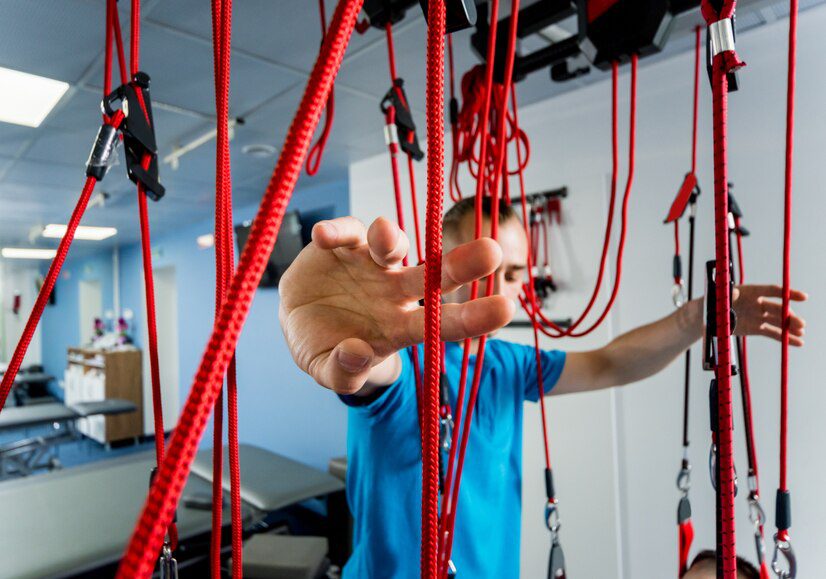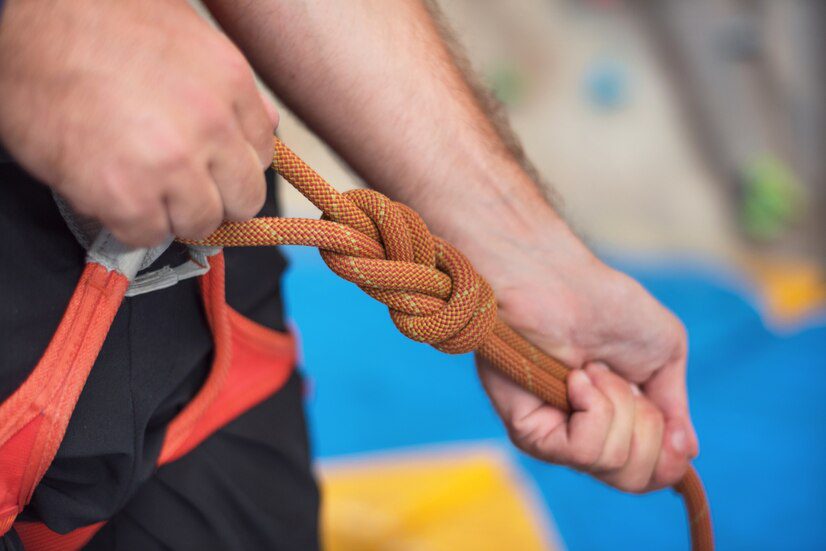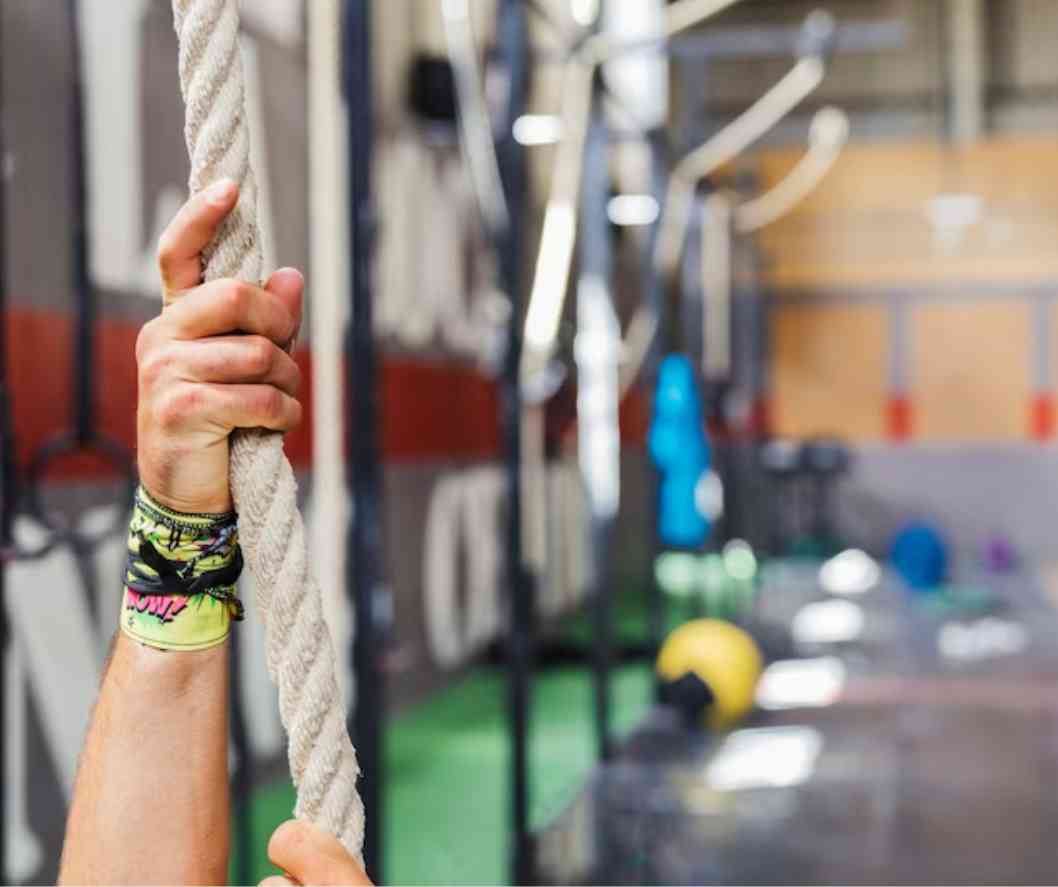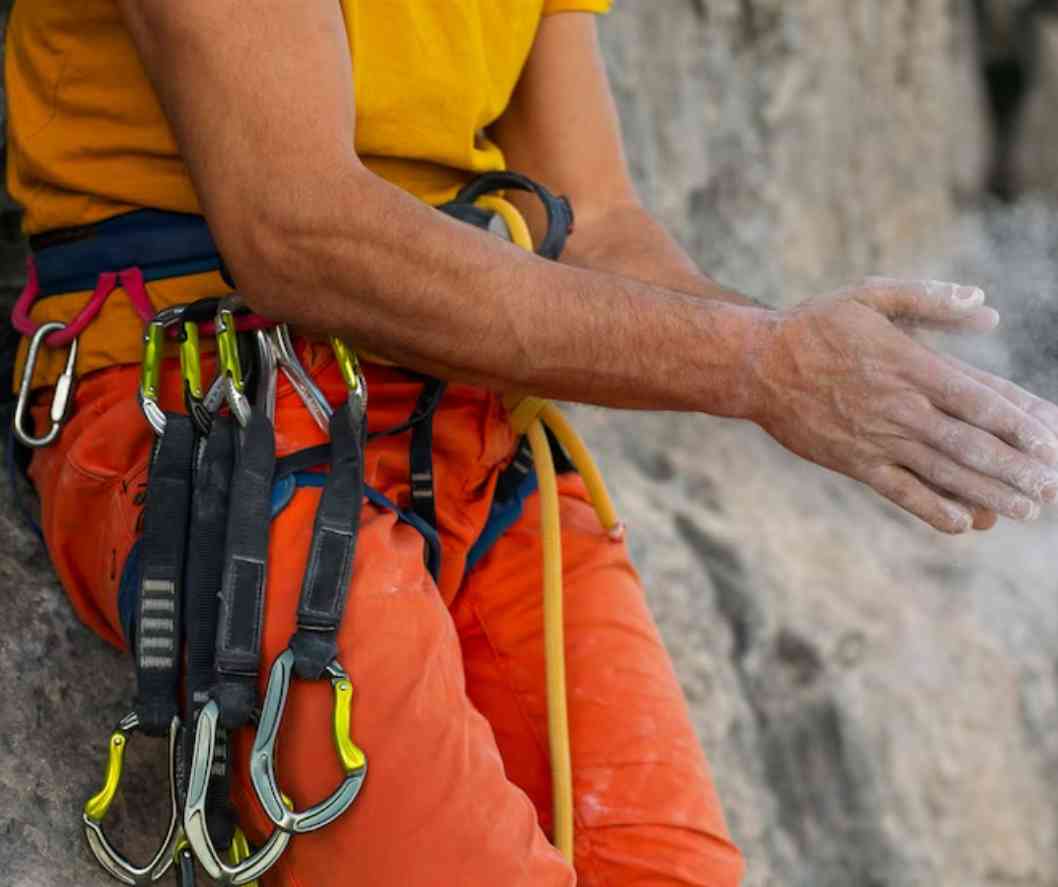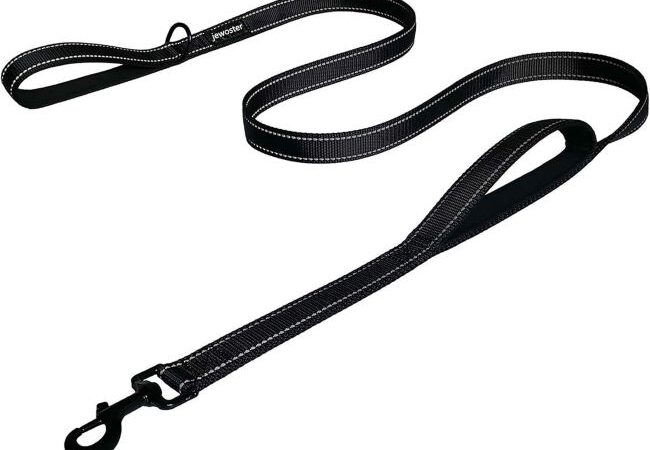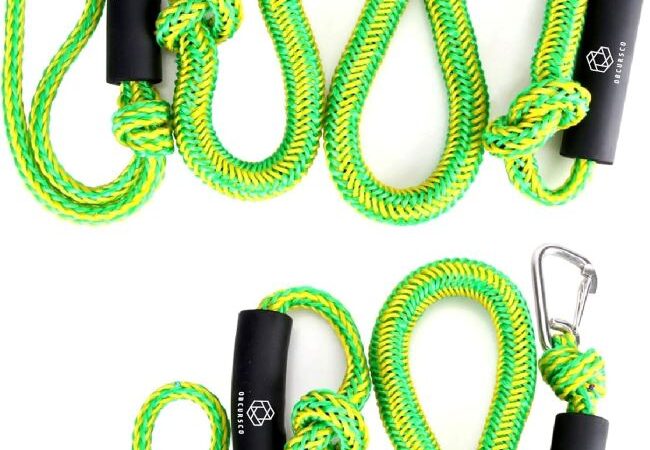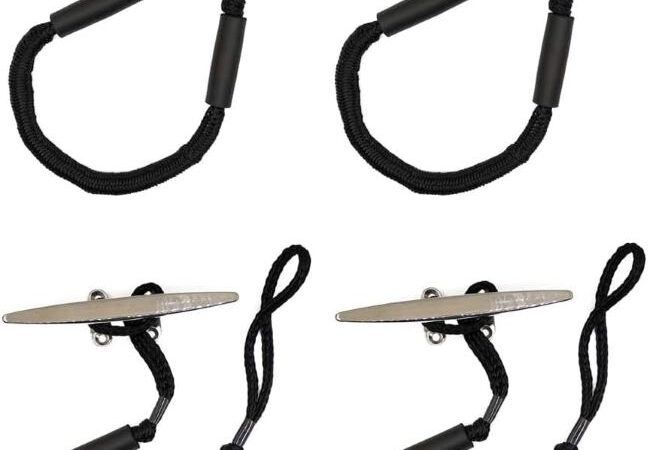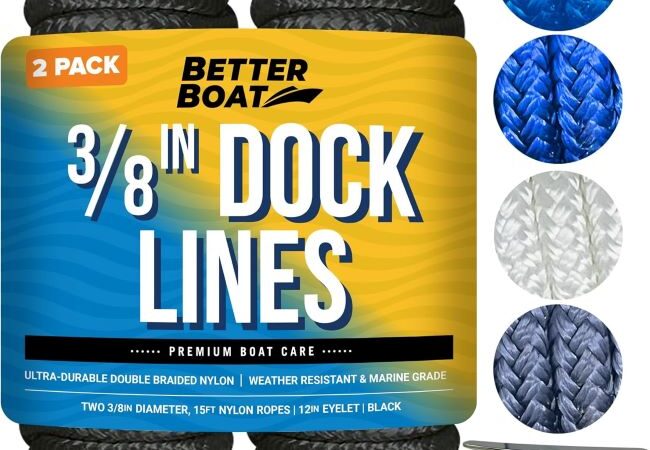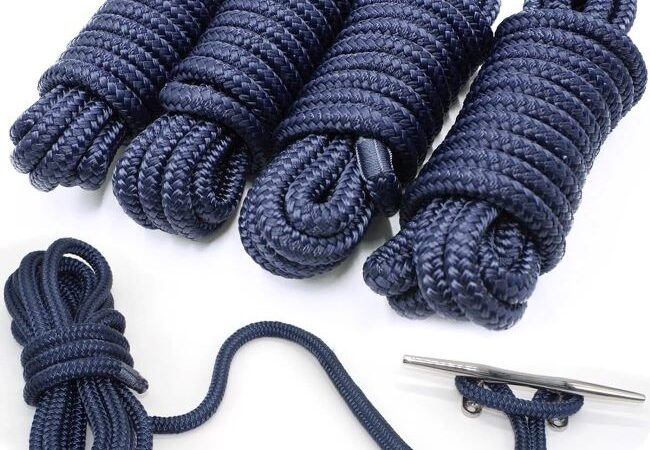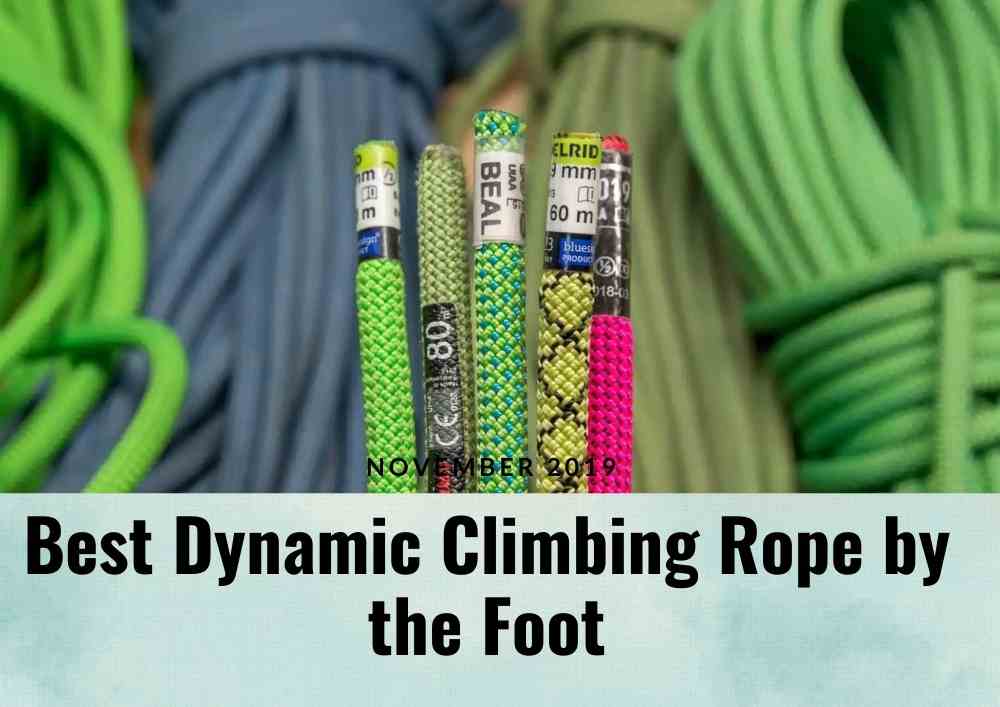
Dynamic Climbing Rope by the Foot: A Comprehensive Guide
Embarking on a thrilling ascent, where the world below seems to fade into a distant memory, requires more than just courage—it demands gear that ensures both safety and precision. This is where the dynamic climbing rope by the foot unfurls its significance. Whether you’re a seasoned climber or a novice eager to ascend new heights, understanding the nuances of a dynamic rope by the foot can spell the difference between a heart-pounding adventure and a daunting ordeal. In this comprehensive guide, we delve into the intricacies of choosing, handling, and maintaining a climbing rope by the foot that aligns perfectly with your ambitions. So, let’s unravel the core of this essential gear, igniting your desire for exploration and setting the stage for a secure vertical odyssey.
Contents at a Glance
ToggleUnderstanding Dynamic Climbing Rope By The Foot
Dynamic climbing ropes by the foot are designed to stretch when loaded, which absorbs the force of a fall and helps to protect the climber from serious injury. Static ropes, conversely, do not stretch and are not recommended for climbing.
Key Features of a Quality Climbing Rope
A reliable climbing rope boasts features such as a durable sheath, a strong core, and a balanced diameter. These attributes contribute to the rope’s longevity, ease of handling, and overall performance. Here are some of the key features of dynamic climbing ropes:
- Stretch: Dynamic ropes are designed to stretch up to 10% of their length when loaded. This stretch helps to absorb the force of a fall and prevents the climber from being jerked too hard.
- Diameter: Dynamic ropes typically range in diameter from 9.5 to 10.5 mm. The thicker the rope, the more it will stretch, but it will also be heavier and more difficult to handle.
- Weight: Dynamic ropes typically weigh between 60 and 70 grams per meter. The lighter the rope, the easier it will be to handle, but it will also be less durable.
- Color: Dynamic ropes are often brightly colored so that they are easy to see in low light conditions.
- Construction: Dynamic ropes are typically made from a core of nylon fibers surrounded by a sheath of nylon fibers. The core provides strength and the sheath provides abrasion resistance.
Benefits of Dynamic Climbing Ropes
Dynamic ropes offer a range of benefits, including better shock absorption, reduced fall impact, and versatility in various climbing scenarios. Their elasticity also minimizes the risk of injury. Dynamic climbing ropes have a number of benefits over static ropes, including:
- They absorb the force of a fall: When a climber falls, the dynamic rope stretches and absorbs the force of the fall. This helps to prevent the climber from being jerked too hard and from being injured. Static ropes do not stretch, so they can cause serious injury in the event of a fall.
- They are more durable: Dynamic ropes are made from high-quality materials that are designed to withstand the rigors of climbing. Static ropes are not as durable and can be damaged more easily.
- They are easier to handle: Dynamic ropes are typically lighter and thinner than static ropes, which makes them easier to handle. This is especially important when climbing overhanging routes or when rappelling.
- They are more versatile: Dynamic ropes can be used for a variety of climbing activities, including sport climbing, trad climbing, and mountaineering. Static ropes are typically only used for mountaineering.
For these reasons, dynamic climbing ropes are the preferred choice for most climbers. They offer a number of benefits over static ropes and are essential for safe climbing.
Factors to Consider When Choosing a Dynamic Rope
When selecting a dynamic climbing rope, factors like diameter, length, UIAA certification, and your climbing style all come into play. Each factor affects the rope’s performance and suitability. Here are some of the factors to consider when choosing a dynamic rope:
- Diameter: The diameter of the rope will affect its weight, handling, and durability. Thinner ropes are lighter and easier to handle, but they are not as durable as thicker ropes. Thicker ropes are more durable, but they are heavier and more difficult to handle. A good all-around diameter for a dynamic rope is 9.8 to 10.2 mm.
- Length: The length of the rope will depend on the type of climbing you will be doing. For sport climbing, a 60-meter rope is sufficient. For trad climbing, you may need a longer rope, such as a 70-meter rope.
- Weight: The weight of the rope will affect how easy it is to carry and manage. A lighter rope is easier to carry, but it is not as durable as a heavier rope. A good all-around weight for a dynamic rope is 65 to 70 grams per meter.
- Stretch: The stretch of the rope will affect how it absorbs the force of a fall. More stretch means more absorption, but it also means more rope drag. A good all-around stretch for a dynamic rope is 8 to 10%.
- Construction: The construction of the rope will affect its durability and performance. Single ropes are the most common type of dynamic rope. They are made with a single core and a single sheath. Half ropes are made with two half ropes that are spliced together. Twin ropes are made with two separate ropes that are used together.
- Features: Some dynamic ropes have features that can make them more versatile or durable. For example, some ropes are treated with a water repellent finish to make them more resistant to water damage. Others have a bi-pattern construction, which makes them easier to handle when wet.
- Price: Dynamic ropes can range in price from $100 to $300. It is important to find a rope that fits your budget and your needs.
Different Types of Dynamic Ropes
Dynamic ropes can be categorized into single, twin, and half ropes. Understanding the distinctions between these types is crucial for choosing the right rope for your specific climbing endeavors. There are three main types of dynamic ropes: single ropes, twin ropes, and half ropes.
- Single ropes are the most common type of dynamic rope. They are designed to be used as a single line, and are capable of absorbing the fall of one person. Single ropes are typically used for sport climbing, top roping, and bouldering.
- Twin ropes are two ropes that are used together as a single system. Twin ropes are designed to be more dynamic than single ropes, and are capable of absorbing the fall of one person when used doubled. Twin ropes are typically used for ice climbing and alpine climbing.
- Half ropes are two ropes that are used individually as part of a safety system. Half ropes are designed to be more dynamic than single ropes, and are capable of absorbing the fall of one person when used doubled. Half ropes are typically used for trad climbing and mountaineering.
Here is a table that summarizes the key differences between the three types of dynamic ropes:
| Rope Type | Uses | Diameter | Stretch |
|---|---|---|---|
| Single rope | Sport climbing, top roping, bouldering | 9-10mm | 10-15% |
| Twin rope | Ice climbing, alpine climbing | 8-9mm | 20-30% |
| Half rope | Trad climbing, mountaineering | 7-8mm | 30-40% |
Caring and Maintenance of Climbing Ropes
Proper care extends the lifespan of your climbing rope. Regular inspection, storage away from sunlight, and avoiding contact with chemicals are essential practices for rope maintenance.
Here are some basic guidelines for rope maintenance:
- Proper rope management: This is the most important thing you can do to extend the life of your rope. Make sure to flake your rope properly after each use to remove any twists or kinks. Never step on your rope, and avoid dragging it across sharp objects.
- Cleaning your rope: If your rope gets dirty, it’s important to clean it to remove dirt, debris, and chalk. You can wash your rope by hand in a tub of warm water with mild soap or a rope-specific cleaner. Never use harsh detergents or bleach.
- Storing your rope: When you’re not using your rope, it’s important to store it properly. Keep it in a cool, dry place away from sunlight and heat. You can store your rope in a rope bag or a clean tarp.
- Inspect your rope regularly: Look for any signs of wear and tear, such as cuts, abrasions, or discoloration. If you see any damage, retire your rope immediately.
- Don’t overload your rope: Never exceed the weight limit for your rope. Overloading your rope can damage it and make it unsafe to use.
- Don’t use your rope for rappelling: Rappelling puts a lot of stress on a rope, so it’s best to use a dedicated rappelling rope.
By following these simple guidelines, you can help your climbing rope last for many years.
How to Choose the Right Length
The length of your climbing rope depends on your climbing type. Longer ropes are ideal for multi-pitch climbs, while shorter ones are suitable for indoor or sport climbing.
It depends on what you are measuring. Here are some examples of how to choose the right length:
- For clothing: The right length of clothing will depend on your body type, the style of the garment, and the occasion. For example, a long dress will be more flattering on tall people, while a short dress will be more flattering on short people. A loose-fitting dress will be more casual, while a fitted dress will be more formal.
- For hair: The right length of hair will depend on your face shape, hair type, and lifestyle. For example, long hair can be very versatile and can be styled in many different ways. Short hair is often easier to care for and can be more flattering on people with round faces.
- For nails: The right length of nails will depend on your personal preference and lifestyle. Long nails can be very elegant, but they can also be more fragile and difficult to care for. Short nails are often more practical and easier to maintain.
- For jewelry: The right length of jewelry will depend on your body type, the style of the jewelry, and the occasion. For example, a long necklace will be more flattering on tall people, while a short necklace will be more flattering on short people. A delicate necklace will be more appropriate for a casual outfit, while a statement necklace will be more appropriate for a formal occasion.
Dynamic Ropes vs. Static Ropes: Which to Choose?
Dynamic ropes are intended for protection against falls, while static ropes are used for hauling gear. Understanding the differences helps you make the right choice based on your climbing objectives. Here is a table comparing dynamic ropes and static ropes:
| Feature | Dynamic Rope | Static Rope |
|---|---|---|
| Stretch | Stretches up to 10% when loaded | Stretches very little, typically less than 5% |
| Impact absorption | Better at absorbing the impact of a fall | Not as good at absorbing the impact of a fall |
| Applications | Climbing, rappelling, rescue | Abseiling, hauling, canyoneering, caving |
| Price | More expensive | Less expensive |
In general, dynamic ropes are better for climbing and rappelling because they can absorb the impact of a fall. This helps to prevent serious injury to the climber. Static ropes are better for abseiling, hauling, canyoneering, and caving because they do not stretch as much. This makes them more efficient for these activities.
Here is a more detailed explanation of the key differences between dynamic ropes and static ropes:
- Stretch: Dynamic ropes are designed to stretch up to 10% when loaded. This allows them to absorb the impact of a fall without putting too much stress on the climber’s body. Static ropes, on the other hand, stretch very little, typically less than 5%. This makes them less effective at absorbing the impact of a fall.
- Impact absorption: Dynamic ropes are better at absorbing the impact of a fall than static ropes. This is because they can stretch more. When a climber falls, the dynamic rope stretches and absorbs some of the energy of the fall. This helps to reduce the force of the impact on the climber’s body. Static ropes do not stretch as much, so they are not as effective at absorbing the impact of a fall.
- Applications: Dynamic ropes are typically used for climbing and rappelling. They are also sometimes used for rescue operations. Static ropes are typically used for abseiling, hauling, canyoneering, and caving. They are not as good as dynamic ropes for absorbing the impact of a fall, but they are more efficient for these other activities.
- Price: Dynamic ropes are typically more expensive than static ropes. This is because they are made with more expensive materials and require more specialized manufacturing techniques.
Ultimately, the best type of rope for you will depend on the activities you plan to use it for. If you are going to be climbing or rappelling, you will need a dynamic rope. If you are going to be abseiling, hauling, canyoneering, or caving, you can use a static rope.
Best Dynamic Climbing Rope By The Foot
Several renowned brands dominate the climbing rope market due to their commitment to quality, innovation, and safety. Researching these brands can aid in your rope selection. Here are my reviews of the best dynamic climbing ropes by the foot, in no particular order:
- X XBEN Outdoor Climbing Rope is a great option for climbers who are looking for a budget-friendly rope. It’s available in lengths from 10 meters to 352 meters, so you can find the perfect length for your needs. The rope is made from high-quality materials and is designed to be durable and abrasion-resistant. It’s also easy to handle and can be used for a variety of climbing activities, including top roping, lead climbing, and rappelling.
- Yes4All Gym Climbing Rope is a great option for climbers who are looking for a rope specifically designed for indoor climbing. It’s made from a soft, flexible material that makes it easy to grip and handle. The rope is also lightweight and easy to carry, making it a great choice for gym climbing.
- EDELRID Eco Boa 9.8mm Dynamic Climbing Rope is a high-quality rope that’s perfect for climbers who are looking for a balance of performance and durability. The rope is made from a durable Dyneema core and a soft, comfortable sheath. It’s also treated with a water repellent finish to help protect it from the elements. The Eco Boa is a great choice for climbers who are looking for a rope that can handle a variety of conditions, from indoor climbing to multi-pitch trad climbing.
- Hunter Safety System Rope-Style Tree Strap is a great option for climbers who are looking for a rope that can be used for a variety of purposes, including climbing, rappelling, and tree-stand hunting. The rope is made from high-quality materials and is designed to be durable and abrasion-resistant. It’s also easy to handle and can be used in a variety of conditions.
- BlueWater Ropes 10.5mm Accelerator Standard Dynamic Single Rope is a high-performance rope that’s perfect for climbers who are looking for a rope that can handle a lot of abuse. The rope is made from a durable Dyneema core and a soft, comfortable sheath. It’s also treated with a water repellent finish to help protect it from the elements. The Accelerator is a great choice for climbers who are looking for a rope that can handle a variety of conditions, from indoor climbing to multi-pitch trad climbing.
So, which dynamic climbing rope is the best for you? It depends on your needs and budget. If you’re looking for a budget-friendly rope, the X XBEN Outdoor Climbing Rope is a great option. If you’re looking for a rope specifically designed for indoor climbing, the Yes4All Gym Climbing Rope is a great choice. If you’re looking for a high-performance rope that can handle a lot of abuse, the EDELRID Eco Boa 9.8mm Dynamic Climbing Rope or the BlueWater Ropes 10.5mm Accelerator Standard Dynamic Single Rope are great options.
Essential Climbing Knots and Techniques
Proficiency in tying essential knots like the figure-eight knot and mastering techniques such as belaying and rappelling is vital for a safe and enjoyable climbing experience.
The Figure Eight Knot
The Figure Eight Knot is the fundamental knot used to tie into the climbing harness. Its secure and easy-to-inspect structure makes it a staple for climbers of all levels.
The Bowline Knot
Ideal for creating a secure loop, the Bowline Knot is essential for attaching your climbing rope to your harness or anchoring point.
The Clove Hitch Knot
The Clove Hitch Knot is perfect for securing yourself to an anchor point and is commonly used for belaying.
The Double Fisherman’s Knot
This knot is vital for joining two ropes together, creating a longer rope for rappelling or setting up anchors.
Belaying Techniques
Top Rope Belay
Top Rope Belay is the safest method for beginners, where the belayer takes in slack as the climber ascends, ready to catch any falls.
Lead Belay
Lead Belay involves a more complex technique, with the belayer giving out rope as the climber ascends and being prepared to lock off the rope in case of a fall.
Anchoring Methods
Equalized Anchor Systems
Creating an equalized anchor system ensures an even distribution of load on multiple anchor points, enhancing safety.
Slings and Webbing
Slings and webbing are versatile tools for building anchors, extending protection, and setting up belay stations.
Efficient Rope Management
Rope Coiling and Storage
Proper rope coiling and storage prevent tangles and snags, saving time and frustration during climbs.
Rope Bag Usage
A rope bag not only protects your rope from dirt and debris but also streamlines the process of unpacking and repacking.
Climbing Movement Techniques
Smearing
Smearing involves using the friction of your climbing shoes against the rock to gain traction on less-defined footholds.
Edging
Edging relies on the narrow edge of your shoe to gain purchase on small ledges or holds.
Jamming
Jamming entails using hand or foot cracks to create secure placements for hands or feet.
Handling Overhangs and Chimneys
Overhang Techniques
Climbing overhangs requires using your body’s core strength and positioning to navigate challenging angles.
Chimney Techniques
Chimney climbing involves using opposing pressures between two parallel surfaces, often using your back and legs.
Crack Climbing
Hand and Finger Cracks
Hand and finger cracks demand different techniques for inserting hands and fingers into the crack for secure holds.
Fist and Off-Width Cracks
Fist and off-width cracks require techniques like “chicken winging” and “stacking” to navigate wider crevices.
Rappelling Safely
Rappel Device Usage
Mastering rappel device usage ensures a controlled descent, avoiding accidents during rappelling.
Double Rope Rappel
Using two ropes for rappelling adds redundancy and security to your descent.
Safety Tips for Using Climbing Ropes
Prioritizing safety is non-negotiable in climbing. Utilize helmets, harnesses, and proper belaying techniques. Regular training and staying updated on safety practices are crucial. Here are some safety tips for using climbing ropes:
- Use the right type of rope for the activity. As mentioned earlier, dynamic ropes are better for climbing and rappelling, while static ropes are better for abseiling, hauling, canyoneering, and caving.
- Inspect the rope before each use. Look for any signs of wear or damage, such as cuts, abrasions, or fraying. If you see any damage, do not use the rope.
- Store the rope properly. Keep the rope in a cool, dry place away from sunlight and sharp objects.
- Do not overload the rope. The rope should not be loaded with more weight than its safe working load (SWL). The SWL is the maximum amount of weight that the rope can safely support.
- Use the correct knots. There are many different knots that can be used for climbing, but some are safer than others. Make sure you know how to tie the knots correctly and that they are secure.
- Belay properly. If you are belaying a climber, make sure you are paying attention and that you are ready to catch the climber if they fall.
- Use a backup system. A backup system is a second rope or system that can be used to catch a climber in case the primary system fails.
- Get training. If you are new to climbing, it is important to get training from a qualified instructor. This will teach you the basics of climbing safety and how to use ropes properly.
Conclusion
In the exhilarating realm of rock-climbing, where every ascent unveils new challenges, your choice of equipment becomes paramount. Among the essential tools, dynamic climbing rope by the foot stands as the unsung hero of your climbing arsenal. This comprehensive guide has navigated the intricate terrain of dynamic ropes, unwinding their nuanced advantages. As your enthusiasm for conquering heights grows, so does the significance of a rope that flexes with your ambitions. Dynamic rope by the foot not only ensures your safety, but it becomes an extension of your determination, a conduit between you and the summit. Now armed with insights into core materials, intricate sheath designs, and impact force absorption, your craving for both thrill and security finds its ultimate answer. Elevate your climbing odyssey—embrace the ascent, rope by the foot.
FAQs
Q: How do I know which diameter is right for my climbing rope?
A: The diameter choice depends on your intended use. Thicker ropes offer durability, while thinner ones are lighter and more flexible.
Q: Can I use a dynamic rope for top-rope climbing?
A: Yes, dynamic ropes are suitable for top-rope climbing. Their elasticity adds an extra layer of safety to the experience.
Q: Are there any specific washing instructions for climbing ropes?
A: It’s best to follow the manufacturer’s guidelines for cleaning and maintaining your climbing rope. Use mild soap, avoid harsh chemicals, and dry it properly.
Q: Can I use a dynamic rope for rappelling?
A: Absolutely, dynamic ropes are commonly used for rappelling due to their shock-absorbing properties.
Q: What’s the average lifespan of a climbing rope?
A: The lifespan varies based on usage and care, but retiring a rope after 5 years of regular use is a general guideline.

